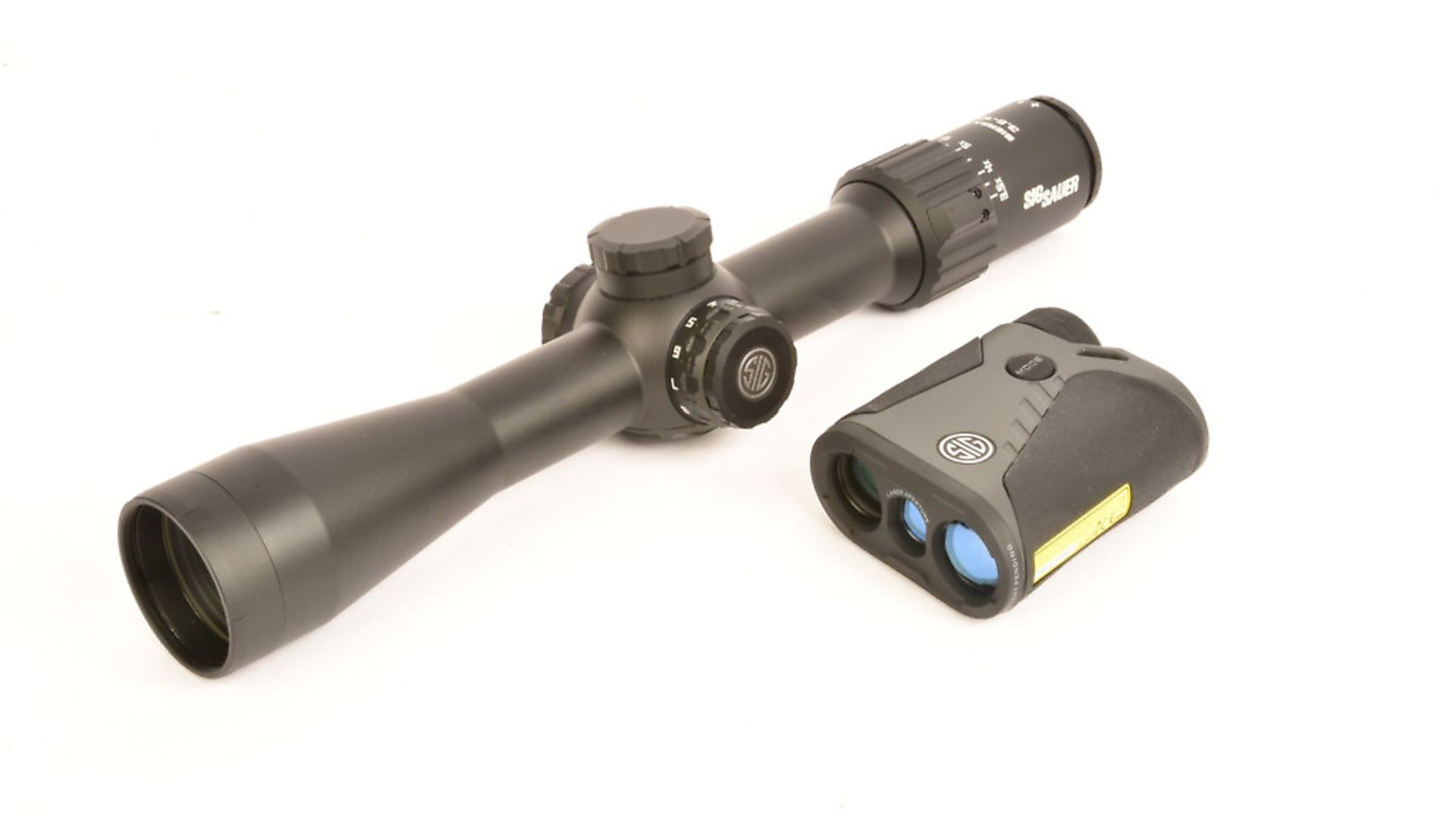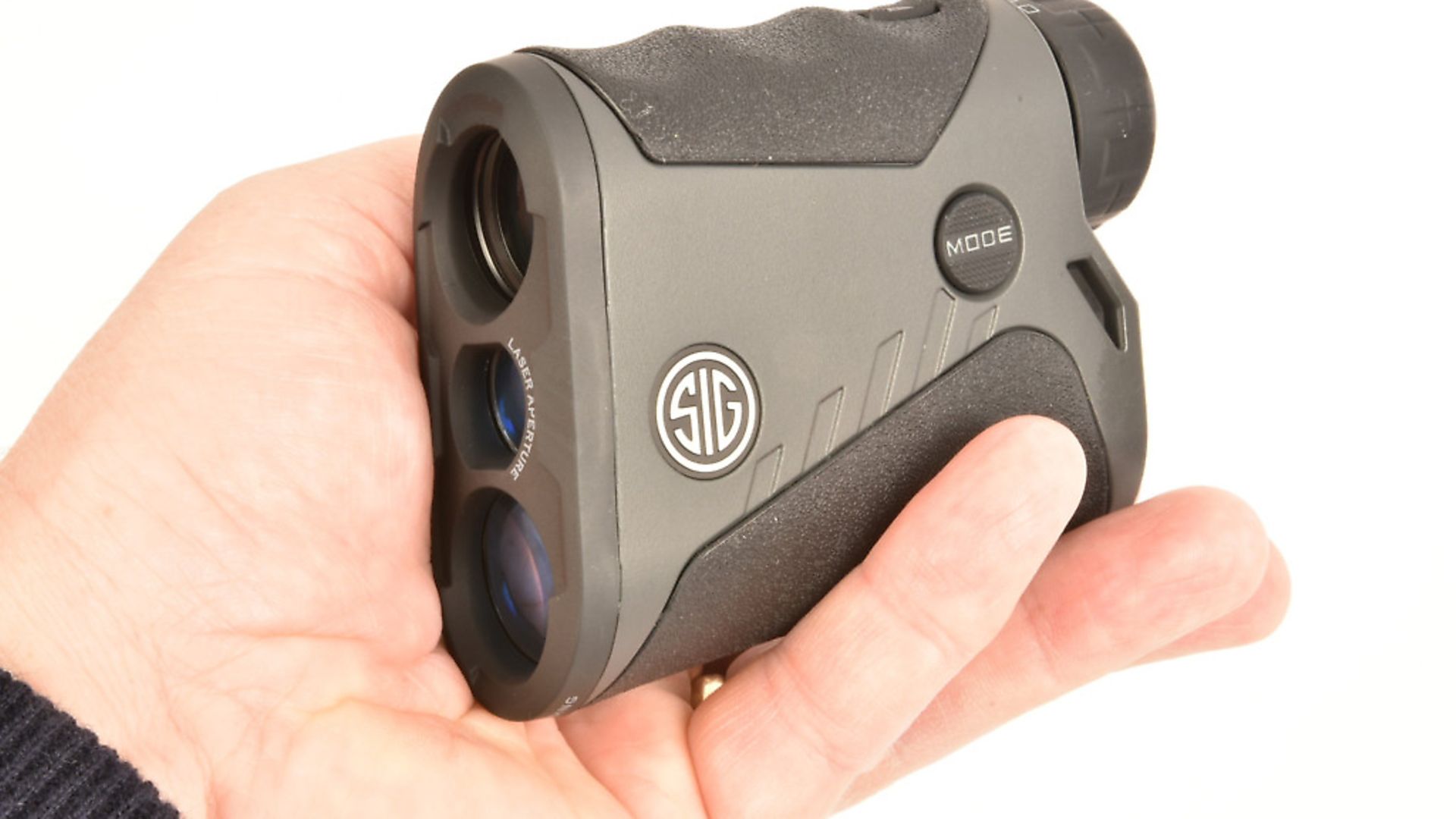Phill Price tests some incredible scope technology
 credit: Archant
credit: Archant
One of the biggest challenges all rifle shooters face is compensating for the curvature of our projectile’s flight, and that doesn’t matter if you’re shooting a .338 Lapua Magnum sniper rife or a 12 ft.lbs. airgun. However, our pellets have a very curved trajectory compared to firearms so we need to be doubly aware and because they have so little striking energy, we need to be ultra-precise as we hunt. A great aid to our sport is the wide availability of laser rangefinders so that we can get precise information about the distance our target is in front of us, and with some simple field testing we can create a range card that tells us the precise aim correction we need for every distance.
What would be better is a connection between the rifle and your scope that took the laser range information and displayed it in your view, and this is precisely what SIG Sauer Electro-Optics has achieved with its BDX range. BDX stands for Ballistic Data Exchange and it works like this: You upload the BDX app to your phone, then pair the scope and rangefinder to it and each other. Next, you input the bullet weight, ballistic coefficient, velocity and zero distance to your phone, which it then shares with the other two devices. Your phone is not needed further as you go shooting because the rangefinder talks directly to the scope.
 credit: Archant
credit: Archant
As you range your quarry, the Kilo rangefinder sends data to the Sierra scope, which illuminates one of 78 hold points on the lower vertical stadia of the reticle, showing you the precise aim point you need. This takes far less time to do than to explain. As you’d expect, this system is far more precise than estimating by eye. With first focal plane scopes, the holdover mark changes its value as you change magnification, and SIG have overcome this by creating a ‘digital focal plane’ which eliminates the problem. In other words, no matter which mag’ you choose, the illuminated hold point will be correct.
Truly superb
Another real-world aid is that the scope will warn you if you cant it. If you tip the rifle away from the vertical it will cause inaccuracy, yet it’s really hard to detect whilst you’re on aim. You can buy bubble levels that you bolt on, but they require you to take your eye from the scope to view them. With the BDX scopes, there are lights at the three and nine o’clock positions that come on if you cant the rifle, and go off again as you return to the correct vertical position. I think that’s truly superb and a tool that will improve our accuracy without question.
 credit: Archant
credit: Archant
Part of the brief to the designers of the scope was that it should look, mount and feel just like a conventional scope, a challenge that they have achieved. The Sierra 3BDX on test weighs 590 grammes and is 12¾” long, so is in fact quite compact and light by modern standards. The Kilo 1400 BDX rangefinder is also very light and compact, fitting into a jacket pocket with ease. You zero the scope just you would any other, with the low profile, yet finger-friendly windage and elevation drums. These have screw-on metal covers to keep then secure. On the left of the saddle is a compartment that holds two batteries, and a rotary drum to adjust brightness and to switch the system off. To allow the Bluetooth data transfer into the scope’s body, a synthetic panel was built into the bottom of the saddle. The data could not penetrate the aluminium body without this addition.
Well designed
I spoke to another journalist who has tested the BDX system on a full-bore rifle and he confirmed the system worked every bit as well as promised. He found that he was able to engage steel plates at varying ranges with great speed and precision, and had come away very impressed. Some versions in the range can also connect to high-tech anemometers to receive wind speed data, and then illuminate dots on the horizontal stadia to show the windage correction you need to hold.
This is clearly a well designed and integrated system and one that shows the future direction of scope design. Quite naturally, it’s not cheap because you need two devices and some pretty clever technology to make it work, but it’s an honestly practical system to use in the field, with no trailing wires or other encumbrances to get in your way. As it stands, the software isn’t able to accept airgun data so it’s not applicable to us yet, but surely an airgun version could be developed, and I expect it to happen soon. For now, I’m just enjoying a look at the future of aiming systems as I believe they will be.
Specification
Manufacturer: SIG Sauer
Importer: highlandoutdoors.co.uk
Model: BDX Combo kit 1400 rangefinder and 3.5-12 x 42 scopes